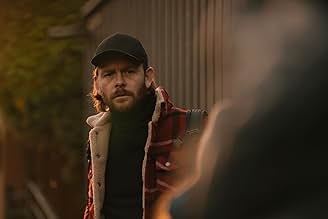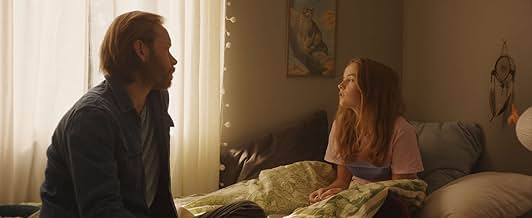Dag Johan Haugerud's second feature film "Beware of children" or originally "Barn" which means nothing like the English word, but "Children" or "Kids" in English, is a profound movie. The film premiered in competition at the Venice film festival. The film is treating the tragedy as we humas react. We deal with it both depression and humour (!). The film is much funnier than you would expect. We got to laugh about some people's reactions, and are disgusted by other's.
The film starts with it's turning point right away:
A 13 year old boy is treated by an ambulance crew in an Oslo suburb school yard fotball field after what seems like a violent episode involving a girl at the same age. She tells she was "just kidding" but admits to hitting her class mate with her rucksack. The boy dies just after reaching hospital, and the school goes into crises mode.
What makes it worse is that the scholl's freemale principal actually is having an affair with the boys single father, a right wing politician. The girl's parents are left wings, and the father actually a member of parliament.
The film is about what happens, and what is said around the scholl environment and at their homes in the aftermath.
Just like his first feature "I belong" ("Som du ser meg" = "The way you see me") this film is really about human communication. I guess the way we communicate is something which interests director Haugerud quite a lot. and it is really interesting as well, and becomes very clear in his movies.
Communication, and here as personal, and not so much through all kinmds of media, which many latter fils have as a theme, is based on so many factors.
All humans social communcation is based upon upbringing and environment, and dealing with such a profond tragedy is a difficult matter for all. We was to blame? Was it an accident? Could this have been prevented? Who feels guilt? What was the reason for this? What do you say? What can be said? How de poople react? How can one deal with such a tragedy? How do the people around the main involved react? How can they help? What can't be said? What is said behind their backs?
Well, still life has to go on. Even trivial talking about curtains and dinner.
The film two and a half hour long, which is a bit lenghty, but none in the cinema seemed to feel it too long. Me neither. Still I think many will think it's too long.
However, it was very different, and quite interesting, though a tiny bit too subtle for to me for giving it a 10/10. Still a film I'd recommend, especially for teachers, but certainly also for people working in environments with a lot of people. Much is actually to learn.



























